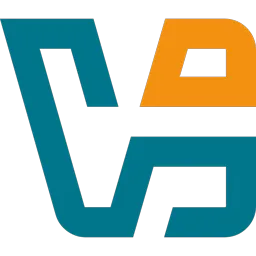VirtualBox 7.2.2 Build 170484 by Oracle VM

VirtualBox is a general-purpose full virtualizer for hardware. Targeted at server, desktop and embedded use, it is now the only professional quality virtualization solution. It is also Open Source Software. The powerful virtualization product for enterprise as well as home use.
VirtualBox provides are useful for several scenarios: Running multiple operating systems simultaneously. VirtualBox allows you to run more than one operating system at a time.
This way, you can run software written for one operating system on another (for example, Windows software on Linux or a Mac) without having to reboot to use it.
Since you can configure what kinds of “virtual” hardware should be presented to each such operating system, you can install an old operating system such as DOS or OS/2 even if your real computer’s hardware is no longer supported by that operating system.
Software vendors can use virtual machines to ship entire software configurations. For example, installing a complete mail server solution on a real machine can be a tedious task.
With VirtualBox, such a complex setup (then often called an “appliance”) can be packed into a virtual machine. Installing and running a mail server becomes as easy as importing such an appliance into VirtualBox.
In order to run VirtualBox on your machine, you need:
- Reasonably powerful x86 hardware. Any recent Intel or AMD processor should do.
- Memory. Depending on what guest operating systems you want to run, you will need at least 512 MB of RAM (but probably more, and the more the better). Basically, you will need whatever your host operating system needs to run comfortably. Plus the amount that the guest operating system needs. So, if you want to run Windows 8.1 on Windows 7, you probably won’t enjoy the experience much with less than 2 GB of RAM. Check the minimum RAM requirements of the guest operating system, they often will refuse to install if it is given less. Sometimes it malfunctions instead. So you’ll need that for the guest alone, plus the memory your operating system normally needs.
- Hard disk space. While VirtualBox itself is very lean (a typical installation will only need about 30 MB of hard disk space), the virtual machines will require fairly huge files on disk to represent their own hard disk storage. So, to install Windows 8, for example, you will need a file that will easily grow to several 10 GB in size.
- A supported host operating system. Presently, we support Windows, many Linux distributions, Mac OS X, Solaris and OpenSolaris. Check the user manual of the VirtualBox version you are using which versions are supported.
- A supported guest operating system. Besides the user manual (see below), up-to-date information is available at “Status: Guest OSes“.
Changes in VirtualBox 7.2.2 (2025-09-11):
- VMM: Fixed issue when VM was not able to start on Windows Arm host
- GUI: Fixed VBox Manager crash when some VM has a lot of snapshots
- GUI: Fixed issue when error notifications could not be displayed on snapshot deletion
- GUI: Fixed VBox Manager crash while attempting to show error notifications too early
- GUI: Fixed VBox Manager crash while removing all VMs from VM list
- GUI: Fixed VBox Manager freeze on Linux hosts at startup or while attempting to add a VM
- GUI: Fixed VBox Manager layout bug with too strict size constraints
- GUI: Updated VBox VM network status-bar indicator tooltip (IP address) on guest additions change
- GUI: Added possibility for Windows 11 host to use legacy light/dark themes from Windows 10
- GUI: Forcing xdgdesktopportal platform theme on Linux when org.freedesktop.portal.Desktop DBus service is available
- Network (NAT, DNS): Fixed potential issue where a nameserver in the 127/8 network could have been passed to the guest
- Network: Added a new experimental type of e1000 adapter (82583V). It requires the ICH9 chipset, since MSIs are not supported by PIIX3
- USB: Fixed passing through USB devices exposed over USB/IP
- USB Webcam: The virtual USB webcam is now part of the open source base package
- Arm host: Improved high CPU usage for idling VMs
- Linux host: Use KVM APIs on kernel 6.16.0 and newer for acquiring/releasing VT-x
- macOS host: Fixed internal networking, including NAT networks on macOS
- macOS host: Fixed VM crash on Arm host on VM start
- Linux Guest Additions: Fixed issue when VBoxClient was reporting it’s unable to load shared libraries on start
- Windows Guest Additions: Fixed issue when installation was failing on Windows XP SP2 64-bit
- EFI: Fixed TPM device not working with certain guests
Homepage – https://www.virtualbox.org
Currently, Oracle VM VirtualBox runs on the following host operating systems:
- Windows hosts (64-bit):
- Windows 8.1
- Windows 10
- Windows 11 21H2
- Windows Server 2012
- Windows Server 2012 R2
- Windows Server 2016
- Windows Server 2019
- Windows Server 2022
- Mac OS X hosts (64-bit):
- 10.15 (Catalina)
- 11 (Big Sur)
- 12 (Monterey)
Intel hardware is required.
- Linux hosts (64-bit). Includes the following:
- Ubuntu 18.04 LTS, 20.04 LTS and 22.04
- Debian GNU/Linux 10 (“Buster”) and 11 (“Bullseye”)
- Oracle Linux 7, 8 and 9
- CentOS/Red Hat Enterprise Linux 7, 8 and 9
- Fedora 35 and 36
- Gentoo Linux
- SUSE Linux Enterprise server 12 and 15
- openSUSE Leap 15.3
Size: 168 MB
DOWNLOAD VirtualBox 7.2.2 for Windows
DOWNLOAD VirtualBox 7.2.2 Extension Pack
DOWNLOAD VirtualBox 7.2.2 for All OS
Leave a Reply
0 Comments on VirtualBox 7.2.2 Build 170484 by Oracle VM




 (44 votes, 3.91 out of 5)
(44 votes, 3.91 out of 5)